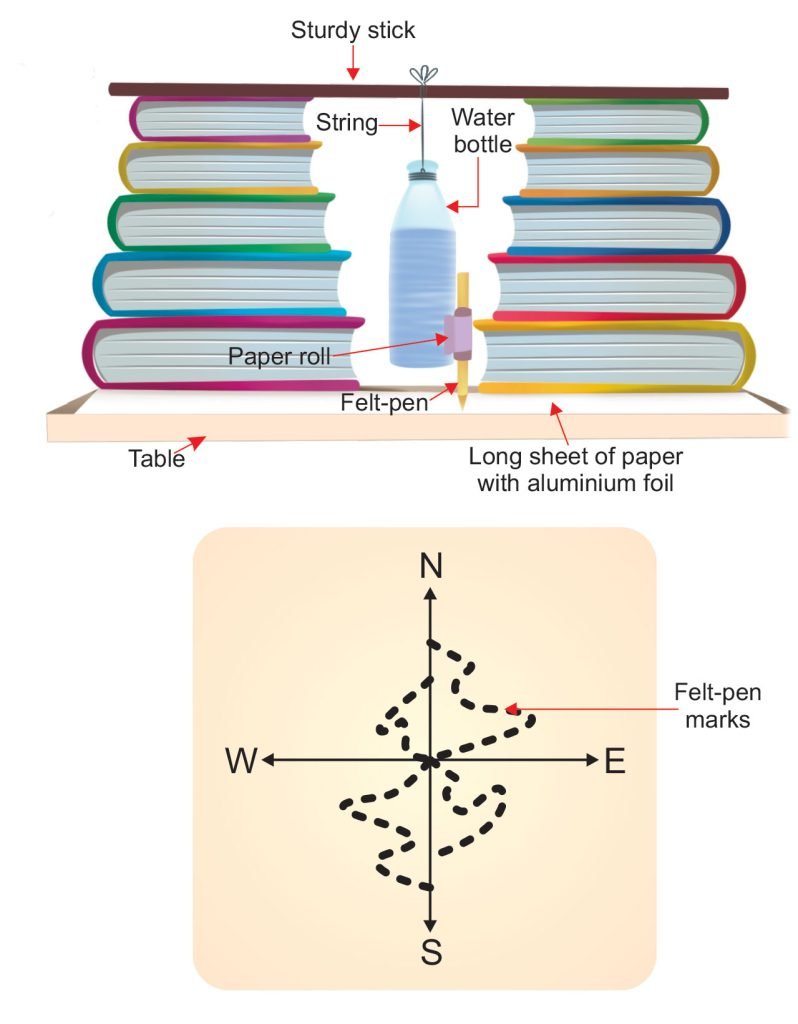
You will need:
- 2-litre bottle of water
(filled) - String
- Long sturdy stick
- Paper + felt pen
- Long sheet of paper
- Aluminium foil
- Table, Books
- Cello tape
Create your own seismograph which will record an earthquake in the event of its occurrence.
INSTRUCTIONS
- Tie the mouth of the bottle with a string. Be sure it won’t break when the bottle is suspended from a height.
- Attach the other end of the string to the centre of the sturdy stick. Place the stick
on 2 stacks of books. The bottle is in between the 2 stacks but not touching
the books. - Also, the bottle must be suspended
1-inch above the table. - Make a roll of paper and place the
felt-pen inside it. Make sure the
felt-pen can move freely. - Stick the long sheet of paper with aluminium foil on the underside of the paper, directly under the bottle.
- Lastly, using the cello tape attach the roll of paper with the felt-pen inside on the side of the bottle, so that the felt-pen may be just touching the paper stuck on the table below.
- Shake the table, gently at first and then a bit harder.
RESULT
Earthquakes are measured using a system called the Richter scale, a method developed by Charles Richter (1935), which analyses the amount of energy released during an earthquake. Seismographs measure the seismic waves in the earth’s crust. This same concept is used in our home-made machine for recording earthquakes.

